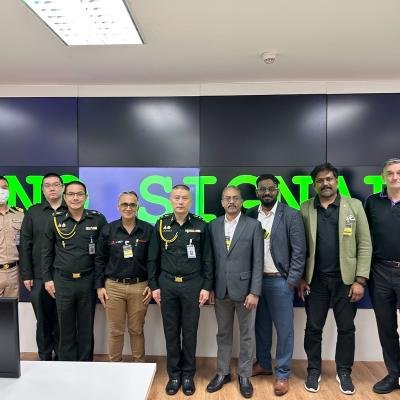As the threat landscape continues to evolve, cyberattacks are becoming more sophisticated, making it challenging for organizations to protect their assets from threats. Endpoints are particularly vulnerable, as they are often the target of attacks. This has led to the development of Endpoint Detection and Response (EDR), Extended Detection and Response (XDR), and Managed Threat Response (MTR) solutions. In this blog, we will explore the differences between these solutions and their benefits for organizations.
EDR (Endpoint Detection and Response):
Endpoint Detection and Response (EDR) is a security solution designed to detect, investigate, and mitigate threats on endpoints. EDR solutions focus on endpoint security, which includes PCs, laptops, mobile devices, and servers. EDR solutions are designed to identify advanced persistent threats (APTs) and other sophisticated attacks that traditional antivirus solutions may not detect.
XDR (Extended Detection and Response):
Extended Detection and Response (XDR) is a security solution that takes EDR to the next level by expanding the detection and response capabilities beyond endpoints to include other areas of the IT infrastructure. XDR solutions provide a more comprehensive view of the entire IT infrastructure, including servers, cloud environments, and network devices, allowing for more effective threat detection and response.
MTR (Managed Threat Response):
Managed Threat Response (MTR) is a managed security solution that combines technology and human expertise to detect, investigate, and remediate threats. MTR services are provided by security experts who monitor and respond to threats 24/7. MTR solutions are designed to provide a comprehensive security approach that combines technology and human intelligence to deliver a high level of protection against advanced threats.
Comparing EDR, XDR, and MTR:
EDR solutions provide a high level of endpoint security, but they are limited to endpoint detection and response. XDR solutions provide a more comprehensive security approach that covers a wider range of IT infrastructure, including endpoints, servers, cloud environments, and network devices. MTR solutions offer the most comprehensive security approach, combining technology and human expertise to detect, investigate, and remediate threats across the entire IT infrastructure.
Benefits of EDR, XDR, and MTR:
EDR solutions provide organizations with a high level of endpoint security and can detect and respond to advanced threats that traditional antivirus solutions may not detect. XDR solutions provide a more comprehensive security approach that can detect threats across the entire IT infrastructure, providing a more comprehensive view of the security posture. MTR solutions provide the highest level of protection, combining technology and human expertise to detect, investigate, and remediate threats 24/7.
What should a startup select:
As a startup, choosing the right cybersecurity solution can be a daunting task. With so many options available in the market, it can be challenging to determine which solution is best for your organization. When it comes to endpoint security, the three main solutions to consider are Endpoint Detection and Response (EDR), Extended Detection and Response (XDR), and Managed Threat Response (MTR).
Here are some factors that startups should consider when selecting between EDR, XDR, and MTR:
- Business requirements: The first thing to consider is your business requirements. Depending on the size of your organization, the industry you operate in, and the sensitivity of your data, you may have different requirements. For example, if you have a small team, EDR might be the best solution for you, while XDR or MTR might be more appropriate for larger organizations.
- Level of expertise: Another factor to consider is your team's level of expertise in cybersecurity. If you have a dedicated security team, then EDR or XDR might be a good fit as these solutions require some level of technical knowledge to set up and manage. On the other hand, if you have a limited cybersecurity team, MTR might be a better option as it provides 24/7 monitoring and response.
- Budget: Cost is always an important factor to consider, especially for startups. EDR is typically the most affordable option, while XDR and MTR can be more expensive. However, it's important to consider the value that each solution provides and weigh the cost against the potential risks and damages of a security breach.
- Scalability: Startups often experience rapid growth, and it's important to choose a solution that can scale as your organization grows. EDR and XDR are more scalable as they can be integrated with other security tools, while MTR might be limited in its ability to scale.
- Integration with existing systems: If you already have security tools in place, it's important to consider whether EDR, XDR, or MTR can integrate with your existing systems. This will help you avoid potential conflicts and ensure that your security tools work seamlessly together.
Ultimately, the decision between EDR, XDR, and MTR depends on your specific business needs and goals. It's important to carefully evaluate each solution and weigh the pros and cons before making a decision. By doing so, you can ensure that you choose the right solution to protect your organization from cyber threats.
What should an established enterprise select:
Established enterprises face a unique challenge when it comes to selecting the right security solution. With multiple options available in the market, it can be difficult to determine which one will meet their needs and provide the best value for their investment. In particular, the decision between Endpoint Detection and Response (EDR), Extended Detection and Response (XDR), and Managed Threat Response (MTR) can be confusing. Here are some key considerations that can help an established enterprise make an informed decision:
- Evaluate the security requirements: Before choosing a security solution, it is essential to understand the security requirements of the organization. This includes assessing the threat landscape, identifying critical assets, and understanding the level of risk tolerance. EDR is ideal for organizations that need to monitor endpoint activities for malware and other malicious activities, while XDR is better suited for enterprises that require broader visibility across network and cloud environments. MTR is ideal for organizations that do not have the resources to manage their security infrastructure and need a comprehensive managed security solution.
- Consider the scalability: Enterprises should also consider the scalability of the security solution they choose. As the organization grows, so does the security infrastructure. EDR may be ideal for small to medium-sized organizations that require endpoint monitoring for a limited number of devices, while XDR can handle the increased complexity of larger organizations with multiple endpoints and cloud-based systems. MTR is a scalable solution that can adapt to the evolving security needs of an organization.
- Determine the level of automation: Automation is critical in today's security landscape as it helps reduce the response time to security incidents. EDR solutions provide a high degree of automation for detecting and responding to threats at the endpoint level. XDR solutions provide even more automation by correlating data from multiple sources and applying advanced analytics to identify threats. MTR solutions provide the highest level of automation by providing a fully managed security service that includes threat detection, response, and remediation.
- Assess the complexity of the solution: The complexity of the solution is another critical consideration for an established enterprise. EDR solutions are relatively simple and easy to deploy, while XDR solutions require a more significant investment in terms of resources and time. MTR solutions are the most complex, as they require the highest level of expertise to manage the security infrastructure effectively.
- Determine the budget: Finally, the budget is a crucial factor in the decision-making process. EDR solutions are typically the most affordable, followed by XDR solutions, while MTR solutions are the most expensive due to the level of expertise and resources required to manage them effectively.
Average price ranges:
The average price ranges of EDR, XDR, and MTR solutions vary depending on the specific vendor, features offered, and the size of the organization. However, here are some estimated average price ranges for each solution:
- EDR (Endpoint Detection and Response):
- Small businesses: $2 to $5 per endpoint per month
- Medium businesses: $1 to $3 per endpoint per month
- Large businesses: $0.50 to $2 per endpoint per month
- XDR (Extended Detection and Response):
- Small businesses: $4 to $8 per endpoint per month
- Medium businesses: $3 to $6 per endpoint per month
- Large businesses: $2 to $4 per endpoint per month
- MTR (Managed Threat Response):
- Small businesses: $4,000 to $8,000 per month
- Medium businesses: $8,000 to $12,000 per month
- Large businesses: $12,000 to $20,000 per month
Conclusion
In conclusion, while EDR, XDR, and MTR are all essential tools for threat detection and response, each serves a unique purpose in securing an organization's infrastructure. EDR focuses on endpoint protection and detection, XDR expands this to multiple sources, and MTR adds managed services for advanced threat detection and response. Ultimately, the best approach is to assess an organization's specific security needs and implement a comprehensive security strategy that utilizes the appropriate tools, including EDR, XDR, and MTR, in conjunction with other security measures.
At digiALERT, we understand the importance of a robust security strategy and offer a range of services to help organizations protect their infrastructure and data. Our team of experts is well-versed in EDR, XDR, and MTR, as well as other security technologies, and can work with you to design and implement a customized security solution that meets your unique needs.







